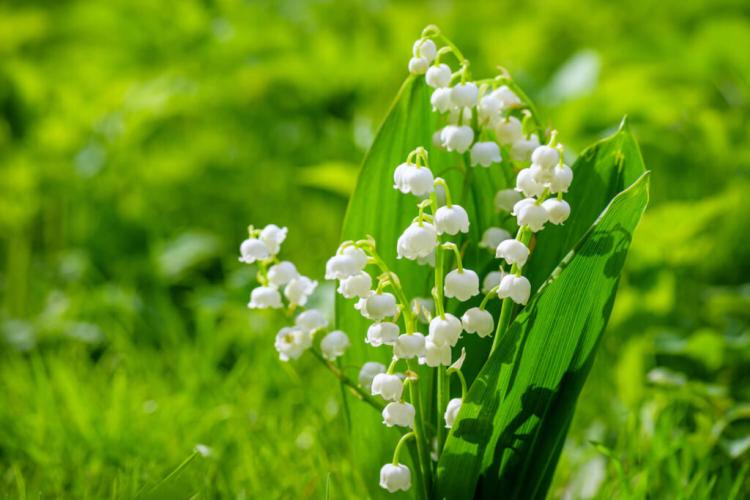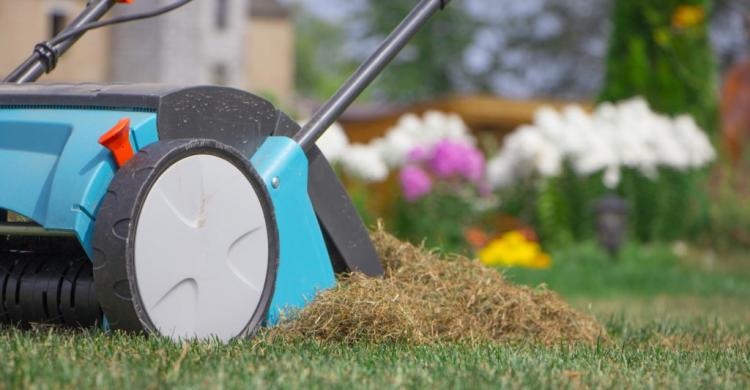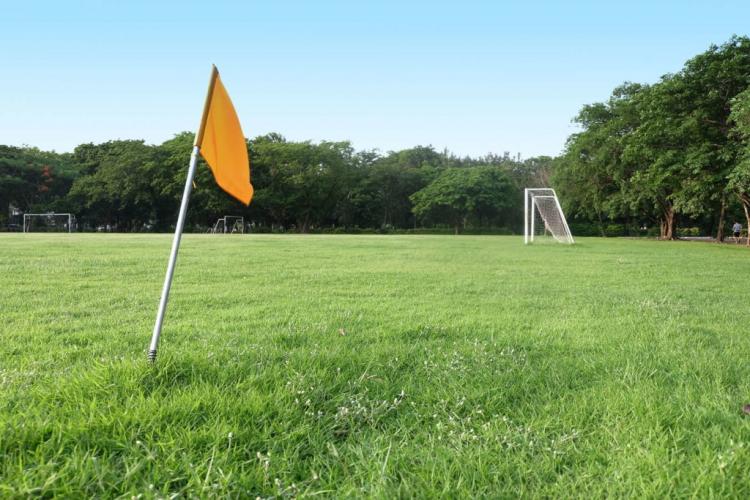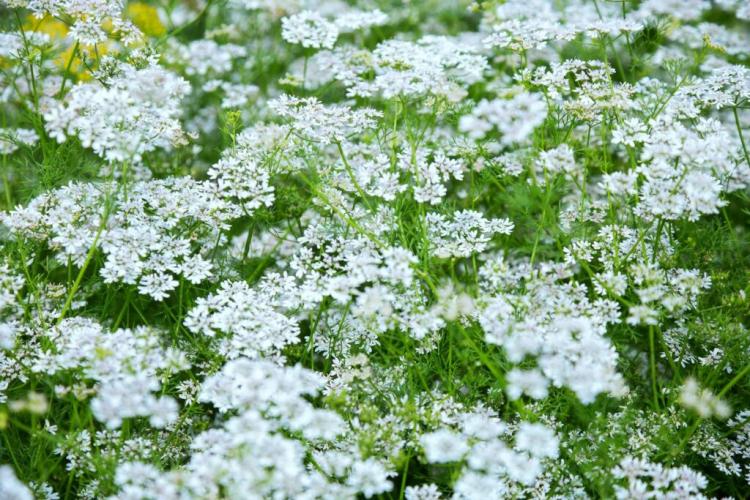Caring for zucchini: tips on watering, fertilizing & diseases
After planting, zucchini require care and nutrients for a bountiful harvest. We introduce common diseases and also give tips on watering and fertilizing zucchini.
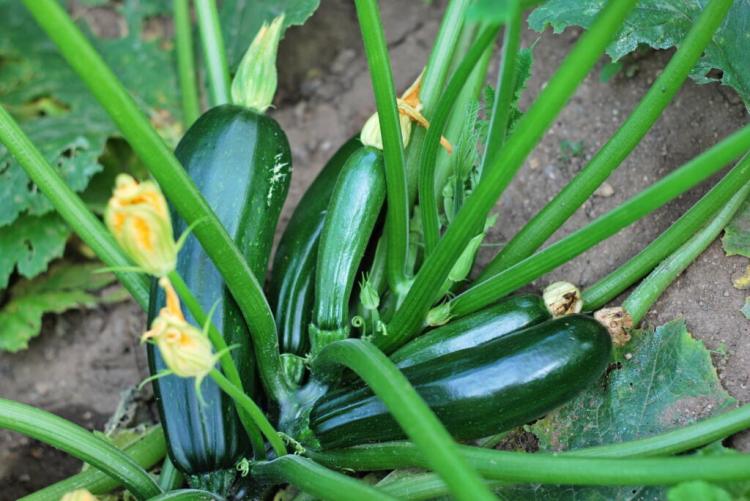
The zucchini is a heavy eater and needs high amounts of fertilizer [Photo: tchara / Shutterstock.com]
The zucchini ( Cucurbita pepo subsp. Pepo convar. Giromontiina ) belongs, like other pumpkins ( Cucurbita maxima , C. moschata & C. pepo ) and cucumbers ( Cucumis sativus ), to the large cucurbitaceae family. Zucchini plants with rich fruit clusters thanks to good care until late in the year. How often do you have to water zucchini? What is the right fertilizer for zucchini? When is the best time to fertilize? And when can nettle manure help? We give you tips on water and nutrient supply and introduce the most important diseases of zucchini.
Caring for zucchini plants: proper watering
Table of Contents
Zucchini need large amounts of water to develop their juicy, crunchy fruits. When it is dry, the plant suffers, wilts quickly and forms significantly fewer flowers in the long term. Regular watering is therefore extremely important with zucchini. Depending on the weather, watering should be done once or twice a week. In midsummer you usually have to water more often. The water for watering should never be cold, because the zucchini plant suffers at temperatures below 10 ° C. Also, water in the morning at best. Then the plant can absorb enough water until the afternoon heat to get through the day well. The following applies: Always pour directly onto the ground and do not wet the plant with water, otherwise the risk of fungal infections increases significantly.
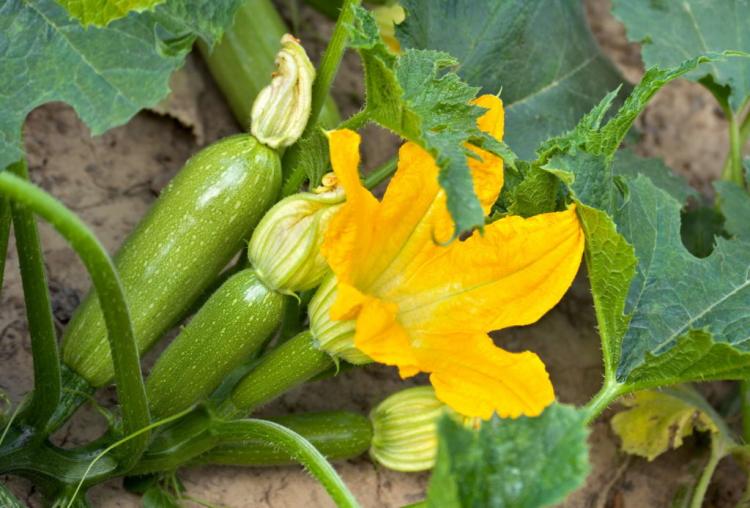
A good water supply encourages the zucchini to flower [Photo: Von Ana / Shutterstock.com]
Tip : A mulch layer made of plant-based materials reduces the high level of evaporation in summer and reduces the growth of weeds. In addition, this has the advantage that the fruits do not lie directly on the ground when they are ripe and are therefore less prone to rot. However, mulch binds nitrogen as it decomposes, so you should think about fertilizing.
Fertilize the zucchini
Zucchini and other cucurbits are very eating vegetables. You therefore need comparatively high amounts of nutrients for healthy growth and a good fruit set. However, not all fertilizers are equally suitable for fertilizing zucchini plants.
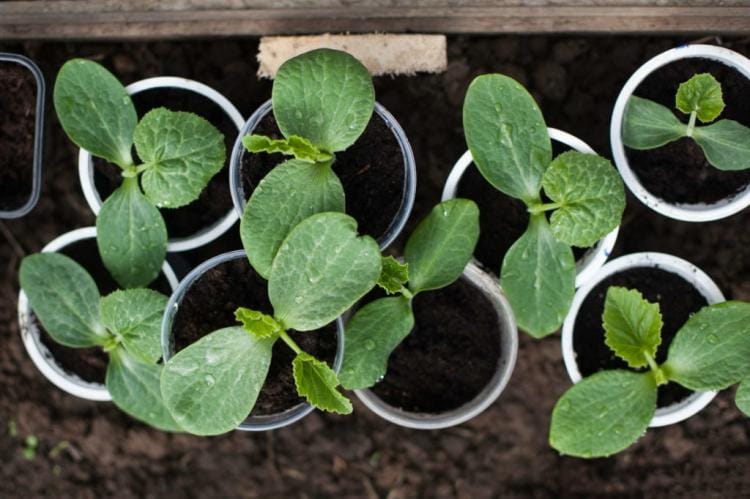
In the first few weeks, the seedlings do not need additional fertilization [Photo: Alina Demidenko / Shutterstock.com]
Suitable fertilizers for zucchini
Mineral fertilizers such as blue grain and Co. are easily soluble and can be absorbed directly by the plant. This quick but short-term nutrient boost is not enough for the zucchini in the long run. If used improperly, mineral fertilizers can quickly lead to over-fertilization of the soil and permanently damage the sensitive roots of the plant. It is not uncommon for the nutrients to be washed out into deeper soil layers, where they lead to increased nitrate levels in the groundwater.
Long-term fertilizers with a high percentage of organic matter are the better choice from a scientific and sustainable point of view. They have many advantages in fertilizing zucchini such as promoting healthy and active soil life as microorganisms feed on organic matter. At the same time, the production of mainly organic fertilizers saves resources and energy compared to the extraction process for mineral fertilizers. For example, plant waste products such as cocoa shells or vinasse from the food production and feed industry are used in our Plantura fertilizers.
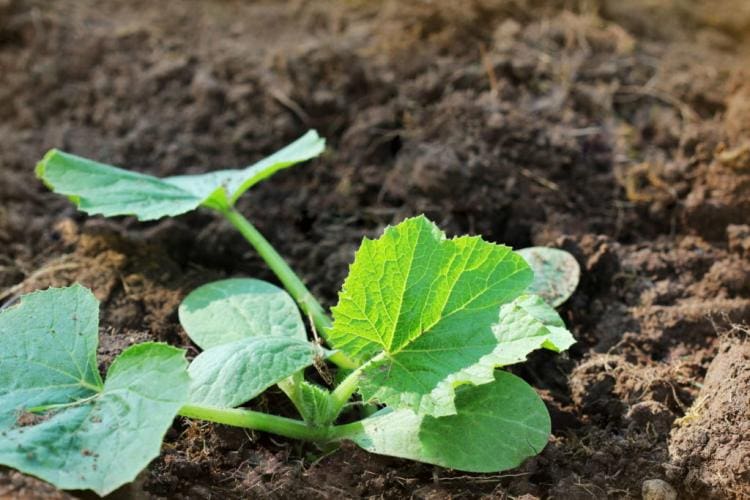
During planting, mainly organic slow-release fertilizers can be applied for an optimal start into the growth phase [Photo: Von vaiv / Shutterstock.com]
When and how often should you fertilize zucchini?
The nutrient supply should always be adapted to the respective stage of development of the zucchini plant. In the period after planting, the zucchini mainly needs nitrogen in order to form leaves and quickly increase in size. In the flowering and fruiting phase, priority should be given to the potassium supply.
At a glance: when should zucchini be fertilized?
- After sowing, no fertilization is necessary until planting.
- Before planting out, enrich the garden soil at the planting site with compost and mainly organic long-term fertilizer.
- Re-fertilize after about two months while the flowers and fruit are forming.
Zucchini can be preferred because the seeds usually germinate very easily and quickly. In order to get strong seedlings, it is advisable to grow the zucchini in the greenhouse or on the windowsill from mid-April. A nutrient-poor growing medium is completely sufficient for this. The seedlings are adequately supplied with the supplies from the seeds in the first few weeks and do not need additional fertilization. You can find detailed instructions for growing and planting zucchini in our special article.
To give the zucchini plants a good start, you can work some compost or granular fertilizer into the soil as you plant them. It is best to use a primarily organic long-term fertilizer with a high potassium content, such as our Plantura organic tomato fertilizer. The fertilizer granulate, which has been slowly decomposed over weeks, releases its nutrients to the plant and the environment in a long-term and gentle manner. After about two months, a second top-dressing is carried out to provide your zucchini with the most important nutrients until the end of the season.
Fertilize the zucchini in the pot
In the case of zucchini in pot culture, the incorporation of granular fertilizers is difficult, as the roots are quickly damaged. For a zucchini in a bucket on the balcony or terrace, we therefore recommend using an organic liquid fertilizer – for example our Plantura organic tomato & vegetable fertilizer – which is applied together with the watering. The nutrients it contains reach the roots directly and can also quickly remedy acute symptoms of deficiency, such as yellowing of the lower leaves.
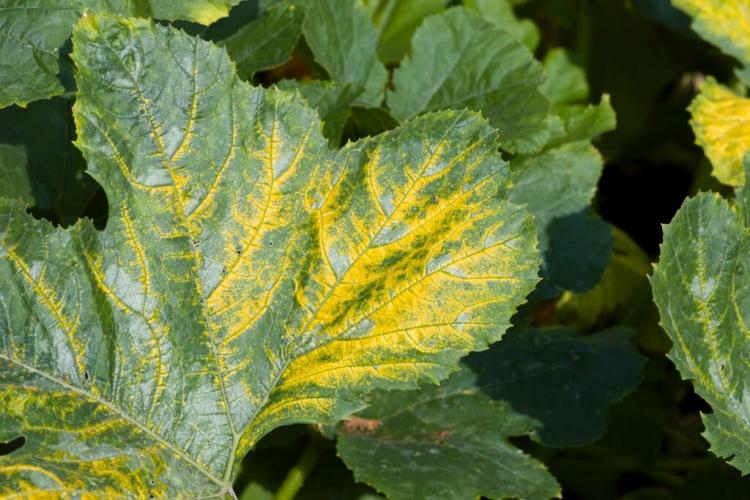
The zucchini yellow mosaic virus is mainly transmitted by aphids [Photo: Paul Maguire / Shutterstock.com]
Pests and diseases on zucchini
Blossom and fruit end rot is a physiological disease due to calcium deficiency. The young zucchini will start to rot from the end. First of all, there is a sunken dark brown area that quickly expands. The mostly slightly acidic garden soil can quickly lead to a calcium deficiency – adding lime to the planting can prevent final rot. Pure calcium fertilizers can supply zucchini plants with the nutrients for a short time and in this way alleviate symptoms that have already occurred. You can read more about the symptoms and prevention of the disease that also affects zucchini in our article on blossom end rot in tomatoes.
Aphids (Aphidoidea) can multiply quickly in early summer and form large colonies on zucchini. The control of aphids can be done with sprays or beneficial insects. In our special article you can find out everything about the use of beneficial insects against aphids.
The Zucchini yellow mosaic virus disease is transmitted through infected tools, but mainly through aphids. The leaves change color to a mosaic-like yellow-green pattern and the plant shows increasing crippling growth on the shoots. Infected plants should be completely removed and disposed of. The best strategy to prevent the viral disease is to fight aphids.
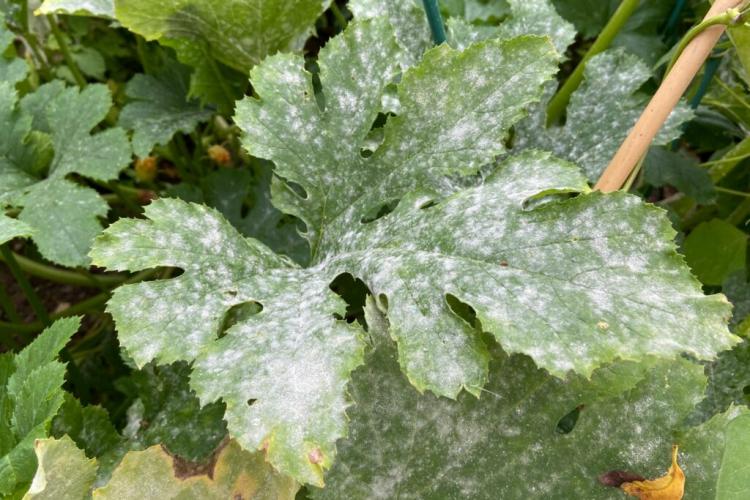
Powdery mildew on zucchini occurs in warm and humid weather [Photo: KanphotoSS / Shutterstock.com]
Powdery mildew (Erysiphaceae) on zucchini causes a white coating initially on the upper side of the leaf, which later also spreads to the underside. You should therefore cut back the infected zucchini leaves at the first signs. Never water the plants from above, otherwise powdery mildew will spread further. For more tips, see our article on how to control powdery mildew on zucchini. The gray mold ( Botrytis cinerea ) also occurs mainly in very humid, warm weather and mainly attacks the fruit. Zucchini should not be too tight to ensure that they dry off quickly after the rain. Here, too, the correct watering, which should only be done directly on the ground, is crucial in order not to spread the spores of the fungus any further.
Tip : A household remedy for fertilizing zucchini is nettle liquid. It not only promotes growth, but also the zucchini's defenses against diseases. Sprayed undiluted, it drives away aphids and other insects.
Ideally, the zucchini bears the first fruits as early as the end of June and can be harvested soon afterwards. We will give you tips on the correct harvest and use of zucchini.

